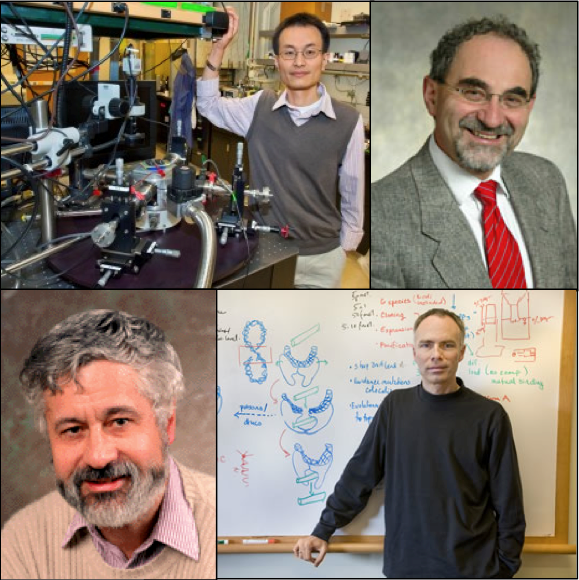Four Lawrence Berkeley National Laboratory (Berkeley Lab) scientists have been elected to the 2012 class of the American Academy of Arts and Sciences, an honorary society founded in 1780 to recognize leading “thinkers and doers.”
The new members are Peidong Yang and Eli Yablonovitch of the Materials Sciences Division, James Berger of the Physical Biosciences Division and Bernard Sadoulet of the Physics Division. All four also hold joint appointments as professors at the University of California, Berkeley. They are among a class of 220 new members that include Secretary of State Hillary Clinton, philanthropist Melinda Gates, actor/director Clint Eastwood, playwright Neil Simon and Walt Disney CEO Robert Iger.
Yang, a chemist whose research focus is on the synthesis of new classes of materials and nanostructures, also serves as director of the Joint Center for Artificial Photosynthesis (JCAP)-North. JCAP-North and its sister facility, JCAP-South in Pasadena, are being funded for up to $122 million over a five-year period by the U.S. Department of Energy (DOE) through its “Energy Innovation Hubs” program.
Earlier this year, Yang was named by Thomson Reuters as the world’s top materials scientist of the past decade and the tenth most influential chemist, based on an analysis of the citation impact of published papers. An expert on nanowires, Yang has found ways to use them for photovoltaics and as a thermoelectric material.

(clockwise from top left) Peidong Yang, Eli Yablonovitch, James Berger and Bernard Sadoulet were elected to the 2012 class of the American Academy of Arts and Sciences.
Yablonovitch is an electrical engineer who specializes in high-speed optical communications and photonic crystals. He is also director of the NSF Center for Energy Efficient Electronics Science (E3S), a multi-institutional center based at UC Berkeley working on dramatically reducing power consumption by electronics.
Sadoulet is an astrophysicist who has been at the forefront of the hunt for dark matter. He is director of the UC system-wide Institute for Nuclear and Particle Astrophysics and Cosmology (INPAC). Sadoulet’s work has taken him deep underground, to an abandoned iron mine in northern Minnesota, where he seeks to detect Weakly Interacting Massive Particles (WIMPs), heavy neutrino-like particles that are the leading candidate for the universe’s dark matter.
Berger is a biochemist and structural biologist who studies protein machines and develops models to explain DNA replication, chromosome superstructure and other essential nucleic acid transactions. Last year he received the National Academy of Sciences Award in Molecular Biology “for elucidating the structures of topoisomerases and helicases and providing insights into the biochemical mechanisms that mediate the replication and transcription of DNA.”
Berkeley Lab now has has 13 scientists who are members of the Academy. The new class will be inducted at a ceremony on October 6, at the Academy’s headquarters in Cambridge, Massachusetts.
# # #
Lawrence Berkeley National Laboratory addresses the world’s most urgent scientific challenges by advancing sustainable energy, protecting human health, creating new materials, and revealing the origin and fate of the universe. Founded in 1931, Berkeley Lab’s scientific expertise has been recognized with 13 Nobel prizes. The University of California manages Berkeley Lab for the U.S. Department of Energy’s Office of Science. For more, visit www.lbl.gov.